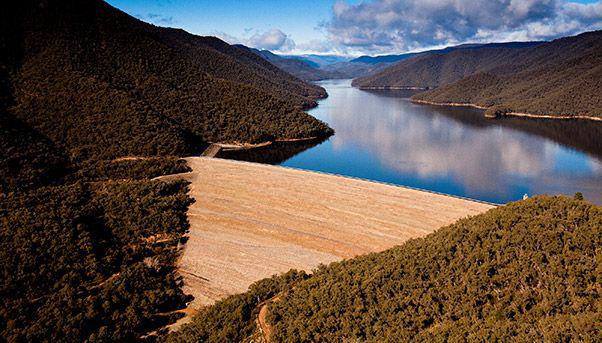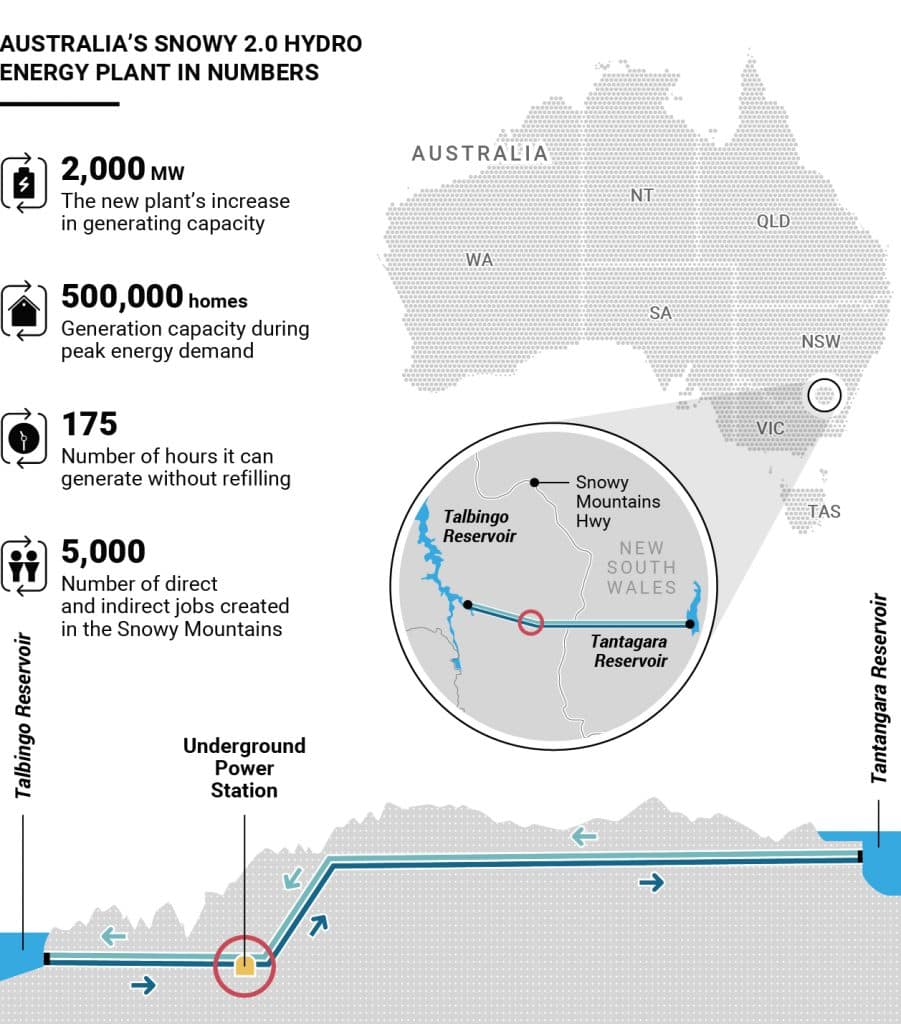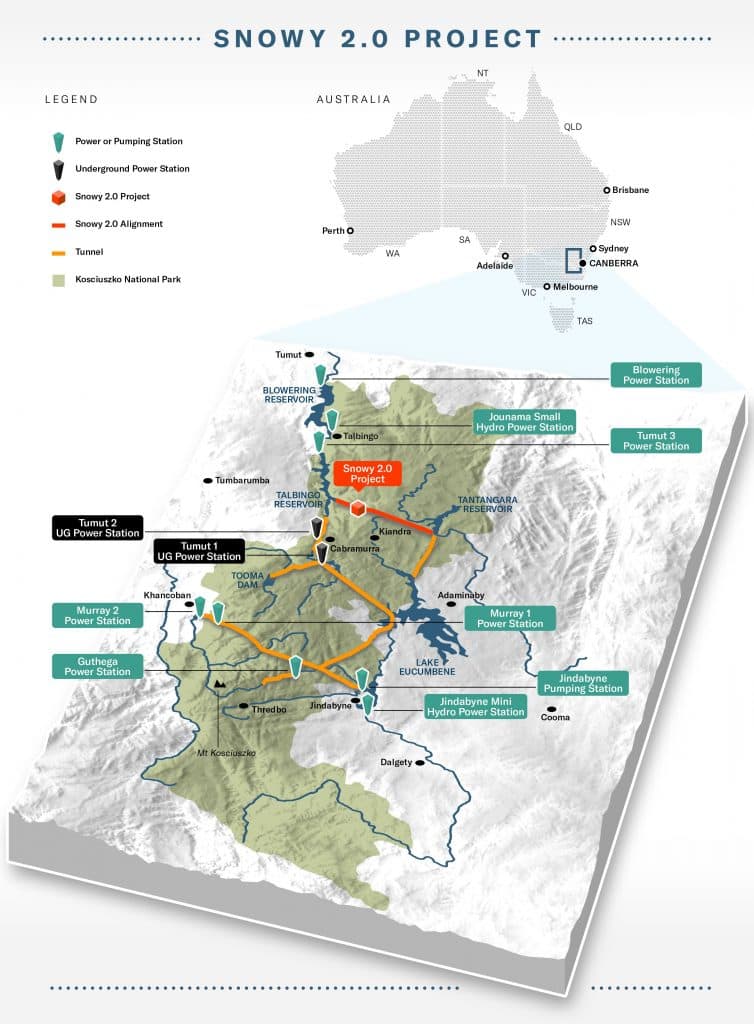
In the middle of Australia’s Southern Alps, workers are breaking ground on Snowy 2.0, a hydropower project to help underpin Australia’s renewable energy future as the country transitions away from coal and other fossil fuels for its electricity.
Amid the trees and rugged terrain of these alps, known as the Snowy Mountains, the highest in the country, workers will excavate a series of shafts and tunnels and the construction of an underground power station will generate enough energy to power 200 million light bulbs. Snowy 2.0 is what is known as a pumped storage scheme, which allows a power station to recycle the water it uses to turn its turbines. The scheme’s unique feature is that electricity can be produced on demand – within 90 seconds – making it the ideal support system for the national grid when one of two situations occur: peak demand for electricity or a drop in production from solar panels or wind turbines due to unfavourable weather conditions.
2,000 MW Expansion
Snowy 2.0 will be a major expansion for the Snowy Mountains Hydro-electric Scheme, which is operated by Snowy Hydro, one of the country’s biggest energy companies. It will add 2,000 megawatts (MW) of generating capacity to the Scheme’s 4,100 megawatts (MW), as well as add 350,000 MW hours of large-scale storage. Its location will be strategic, lying between Sydney and Melbourne, the country’s two biggest cities.
“Snowy 2.0, like the original Snowy Scheme, is a nation building project that is vital to Australia’s economy and our energy transition,” Snowy Hydro Chief Executive Paul Broad said in a press release published early this year. “It will keep the lights on and our energy system secure.” The Scheme belongs to Snowy Hydro’s portfolio of assets that produces electricity for the national grid. It has 16 dams and nine hydropower stations. It already has a pumped storage scheme at the Tumut 3 power station.

A pump storage scheme consists of two reservoirs at different elevations with a power station between them. Water from the upper reservoir passes through the station to turn the turbines and generate electricity before emptying into the lower reservoir. The water is later pumped back to the upper reservoir to be used again. So the upper reservoir is like a storage tank, ready for use at a moment’s notice.
In the case of Snowy 2.0, Salini Impregilo and Australian company Clough, are the two builders commissioned to do the work, will link the existing Tantangara and Talbingo dams and their respective reservoirs by excavating a series of tunnels. Between the dams, which are 27 kilometres apart, they will put a power house with pumping facilities in a power station nearly one kilometre underground. At an elevation of 1,222 metres, Tantangara will serve as the upper reservoir with a capacity of up to 254,100 megalitres. Talbingo will be the lower reservoir at 546 metres. It has a capacity of 920,600 megalitres.

Broad Effort
Hydroelectricity plays a critical role in Australia’s renewable energy generation and is responsible for some 34% of all the electricity produced by renewable resources, according to Australia’s Clean Energy Council, a non-profit organisation that advocates for renewable energy. In 2017, hydroelectricity produced 12,920 GWh, the most of any renewable resource. When it comes to total production, however, its contribution is still minimal at 5.74%.
Most of the country’s hydroelectricity production is concentrated in Tasmania and New South Wales, a state on the continent, where the Snowy Hydro’s Scheme is located and Snowy 2.0 will be built.

